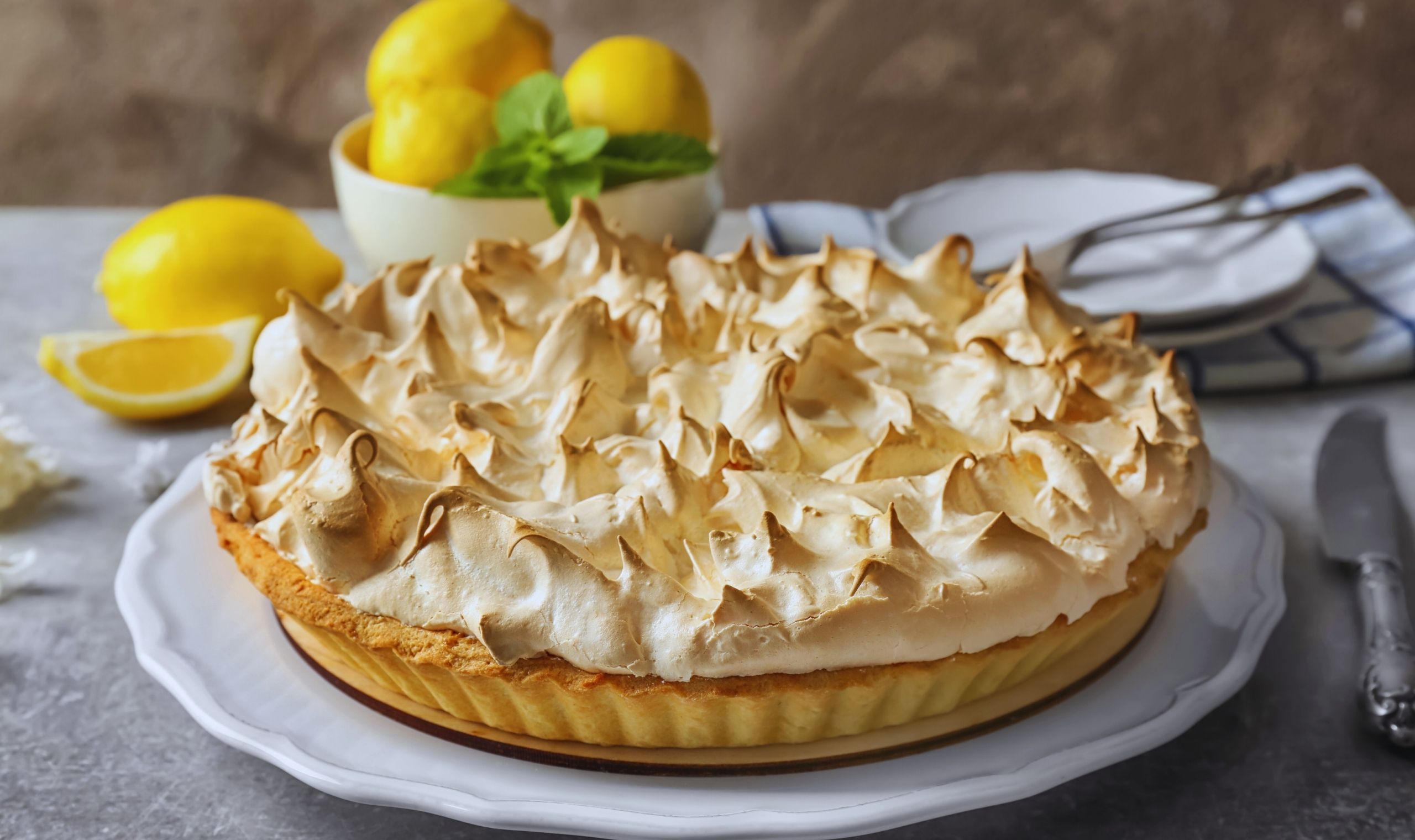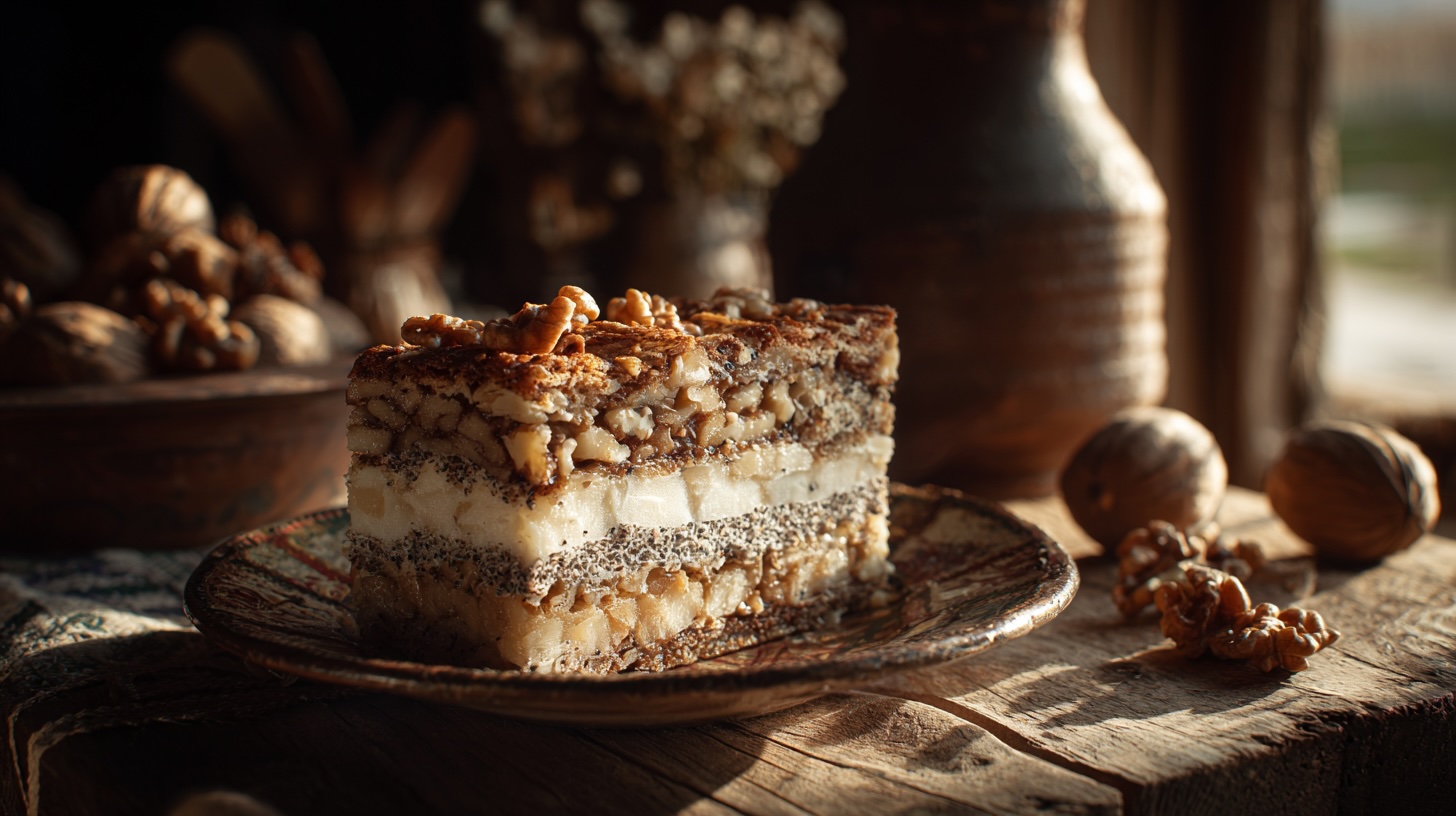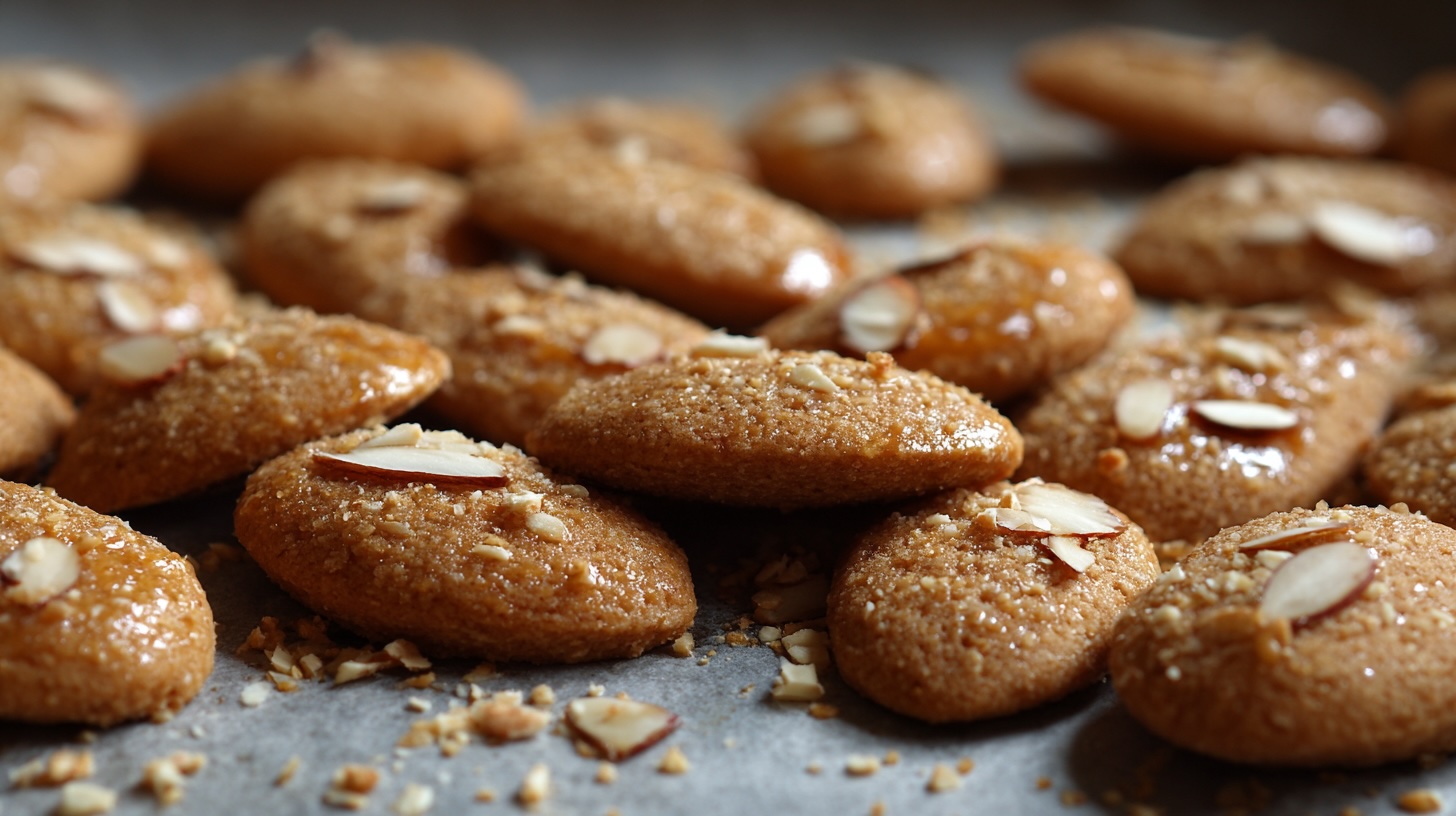Australia’s Delight: The Irresistible Lemon Meringue Pie
Lemon Meringue Pie
Lemon meringue pie is a delightful dessert that has captured the hearts and taste buds of many, especially in Australia. This classic dish features a tart lemon filling encased in a crisp pastry crust, topped with a fluffy layer of meringue. Its origins can be traced back to Europe, but it has found a special place in Australian cuisine, where it is often associated with family gatherings, festive celebrations, and weekend barbecues.
The allure of lemon meringue pie lies in its unique flavor profile. The tartness of the lemon filling contrasts beautifully with the sweetness of the meringue, creating a harmonious balance that appeals to a wide range of palates. This combination is particularly significant in a culinary landscape that values fresh, regional ingredients, as the use of lemons often sourced from local orchards adds a vibrant touch to the pie. In many Australian homes, a perfectly baked lemon meringue pie serves not only as a dessert but as a centerpiece that evokes fond memories and community spirit.
As this dessert has evolved over time, it has adapted to various tastes and preferences, leading to different interpretations of the classic recipe. Some variations incorporate various citrus fruits, while others play with alternative crust options or meringue textures. Despite these adaptations, the core elements of tartness from lemon juice and the airy lightness of meringue remain constant, ensuring the dessert retains its identity. This beloved pie continues to be celebrated across Australia, making it a true icon of the nation’s culinary heritage.
The History of Lemon Meringue Pie
Lemon meringue pie, a dessert adored for its tangy filling and fluffy topping, has a history that spans several centuries and continents. Its roots can be traced back to ancient civilizations, where the concept of combining citrus with sweeteners was first developed. The Romans, for instance, enjoyed dishes that incorporated lemons, although the meringue aspect would not appear until much later. The modern version of lemon meringue pie emerged in Europe during the 18th century. It is believed that the pie originated in England, where culinary creativity flourished. The combination of a crisp pastry shell filled with lemon curd and topped with a fluffy meringue quickly became popular.
The journey of lemon meringue pie took a significant turn when it crossed the Atlantic to America in the 19th century. American cooks adapted the pie to reflect local tastes, leading to a widespread embrace of this delightful dessert. Recipes began to appear in cookbooks and magazines across the United States. As pioneers migrated westward, lemon meringue pie became a staple dish known for its refreshing flavors and satisfying textures.
The dessert eventually made its way to Australia through settlers and immigrants, where it quickly grew in popularity. Today, lemon meringue pie is a quintessential part of Australian cuisine, frequently served at gatherings and celebrations. It’s praised not only for its delectable taste but also for its ability to evoke nostalgia and comfort. Numerous variations continue to delight palates, ensuring that this classic remains cherished within both Australian households and beyond.
Ingredients Needed for Perfect Lemon Meringue Pie
To craft a delightful lemon meringue pie that captivates the palate, one must consider the essential ingredients that contribute to its distinct flavor and texture. This delectable dessert consists of three main components: the tart crust, the lemon filling, and the meringue topping.
Firstly, the tart crust serves as the foundation of the pie. For an undeniably tender and flaky crust, use all-purpose flour, unsalted butter, sugar, and a pinch of salt. The butter, when cold and cut into the flour, creates a flaky texture. Sugar lends a subtle sweetness, while salt enhances overall flavor and balances the richness. Lastly, cold water is essential to bind the dough without melting the butter, ensuring a crisp final product.
Next is the brilliant lemon filling, which provides the signature tang that makes lemon meringue pie truly irresistible. The stars of this filling are fresh lemons, sugar, cornstarch, water, and egg yolks. The fresh lemons contribute a vibrant acidity and zest, while sugar balances the tartness. Cornstarch plays a crucial role as a thickening agent, providing a smooth and velvety texture. Water assists in combining these ingredients, and the egg yolks not only enrich the filling but also help in setting its consistency when baked.
Finally, the meringue topping is what elevates lemon meringue pie from ordinary to extraordinary. To achieve a light and airy meringue, egg whites, sugar, and cream of tartar are essential. Egg whites, when whipped, create a stable foam structure, while sugar adds sweetness and contributes to the meringue’s glossy finish. Cream of tartar helps stabilize the whipped egg whites, allowing for a perfect presentation. Each ingredient works harmoniously to create the ideal lemon meringue pie, showcasing a balance of flavors and textures that is sure to please any dessert lover.
Step-by-Step Recipe: How to Make Lemon Meringue Pie
Lemon meringue pie is a delightful dessert that combines a tangy lemon filling with a light, fluffy meringue topping. This step-by-step recipe will guide you through the process of creating this irresistible treat at home.
Preparation Time: 20 minutes
Cooking Time: 30 minutes
Cooling Time: 2 hours
Total Time: Approximately 2 hours and 50 minutes
Servings: This recipe yields 8 servings.
Ingredients:
- 1 pre-made pie crust
- 1 cup granulated sugar
- 1/4 cup cornstarch
- 1/4 teaspoon salt
- 1 1/2 cups water
- 3 large egg yolks
- 1/2 cup fresh lemon juice
- 2 tablespoons lemon zest
- 2 tablespoons unsalted butter
- 3 large egg whites
- 1/4 teaspoon cream of tartar
Instructions:
- Preheat your oven to 350°F (175°C).
- To prepare the lemon filling, combine the granulated sugar, cornstarch, and salt in a saucepan. Gradually add water while stirring to combine.
- Cook over medium heat, stirring constantly until the mixture thickens. Once thick, remove from heat.
- In a separate bowl, whisk the egg yolks, then add a small amount of the hot mixture to temper the yolks. Return this mixture to the saucepan and mix well.
- Add lemon juice, lemon zest, and butter to the saucepan and stir until the butter is melted. Pour the lemon filling into the pre-baked pie crust.
- For the meringue, beat the egg whites with cream of tartar until stiff peaks form. Gradually add sugar, continuing to beat until glossy.
- Spread the meringue over the lemon filling, making sure it touches the crust to prevent shrinking.
- Bake for 10-15 minutes or until the meringue is lightly browned. Allow the pie to cool completely before serving.
Serve chilled for a refreshing dessert that truly captures the essence of Australia. For the best results, ensure all ingredients are fresh and follow the steps carefully to avoid common pitfalls.
Tips and Tricks for Achieving the Perfect Meringue
Creating the perfect meringue is crucial for an ideal lemon meringue pie, as it contributes both to the aesthetic appeal and the overall taste of the dessert. To achieve a light and fluffy meringue, start with room temperature egg whites. Chilling your eggs can inhibit their ability to whip properly. When separating the yolks from the whites, ensure that no yolk remains in the whites, as even a small amount can prevent the egg whites from achieving their full volume.
Using a clean, dry bowl is essential for whipping egg whites. Any residue or grease can compromise the meringue’s stability. A glass or metal bowl is preferred, while plastic bowls should be avoided due to their potential to trap fat. To enhance the stability of your meringue, consider adding a pinch of cream of tartar, which acts as a stabilizer and helps to achieve a fluffier texture.
When it comes to sweetening the meringue, fine granulated sugar is recommended, as it dissolves more easily compared to coarser sugar, resulting in a smoother finish. Add the sugar gradually, little by little, while continuing to whip the egg whites until they reach stiff peaks. It is critical to ensure that the sugar is fully dissolved before stopping the mixing process; this can be confirmed by rubbing a small amount between your fingers to check for any grit.
Once you’ve achieved the desired consistency, immediately spread the meringue over the lemon filling. Ensure that it touches the edges of the crust to prevent shrinking during baking. Finally, bake at a moderate temperature and keep a close watch to avoid over-browning. By following these tips, you will enhance your chances of creating a meringue that not only complements the tartness of the lemon filling but also stands the test of time during serving.
Serving Suggestions and Pairings
Lemon meringue pie, a beloved dessert known for its zesty flavor and fluffy texture, can be elegantly served and paired to enhance its distinct taste. To start, consider garnishing the pie with freshly grated lemon zest. This not only adds a vibrant touch to the presentation but also amplifies the citrus notes inherent in the filling. Additionally, a sprinkle of finely chopped mint leaves can provide a refreshing contrast, making each bite truly delightful.
When it comes to side dishes that harmonize with the lemon meringue pie, serving it alongside a scoop of vanilla bean ice cream is a classic choice. The creaminess of the ice cream complements the pie’s tart filling, while its sweetness offsets the tang of the lemon. Alternatively, a dollop of lightly whipped cream can add a soft texture that balances the pie’s sharp flavors. For a more textural experience, consider a side of buttery shortbread cookies; their crumbly nature pairs well with the pie’s smooth meringue.
Beverage pairings can make a significant impact on the lemon meringue pie experience. A glass of chilled sparkling wine, such as Prosecco or Champagne, offers a delightful effervescence that enhances the pie’s citrus profile. For non-alcoholic options, a refreshing iced tea infused with lemon or a lemon-lime soda can echo the pie’s flavors while providing a bubbly contrast. Additionally, a light herbal tea, such as chamomile or peppermint, serves as a soothing companion to the tartness of the dessert.
In conclusion, lemon meringue pie can be elevated through thoughtful garnishes, harmonious side dishes, and complementary beverages, creating a well-rounded dessert experience that celebrates its unique flavors. By combining these serving suggestions and pairings, one can transform a simple slice of pie into a memorable culinary occasion.
Variations of Lemon Meringue Pie
Lemon meringue pie is a versatile dessert that has inspired countless variations, appealing to diverse tastes and dietary preferences. Traditional lemon meringue pie combines a tangy lemon curd filling, a crisp pastry crust, and a fluffy meringue topping, but there are many creative twists that modern bakers are exploring to enhance this classic treat.
One popular variation is the gluten-free lemon meringue pie, which caters to those who have gluten intolerances or celiac disease. Instead of the traditional wheat-based crust, bakers can utilize alternatives made from almond flour, coconut flour, or even crushed gluten-free cookies. These crusts maintain the essential flaky texture while accommodating dietary restrictions without sacrificing flavor.
Another imaginative option incorporates different citrus flavors, providing a refreshing change from the standard lemon. Variations such as lime meringue pie and grapefruit meringue pie offer a unique twist, where the tartness of each fruit harmonizes beautifully with the sweet meringue topping. Additionally, some creative bakers experiment with a combination of citrus fruits, such as a lemon-lime meringue pie or a mixed citrus pie, which deepens the flavor profile and adds complexity to the dessert.
In recent years, innovative bakers have also embraced modern techniques and ingredients, leading to a rise in unconventional variations. For instance, the inclusion of herbs, such as basil or thyme, can create an unexpected yet delightful pairing with the tart lemon filling. Some chefs even opt for a no-bake approach, using chilled lemon curd and whipped cream on a pre-made crust for a simpler preparation without compromising on taste. The increasing popularity of plant-based diets has also given rise to vegan lemon meringue pie recipes, which typically utilize aquafaba (the liquid from canned chickpeas) to create a fluffy meringue substitute, allowing for a deliciously inclusive dessert option.
Cultural Impact
Lemon meringue pie holds a significant place in Australian culture, celebrated not only as a beloved dessert but also as a symbol of community and tradition. Its origins can be traced back to early Australian settlers who adapted recipes from their British ancestors, leading to the evolution of a uniquely Australian version of this classic pastry. Across the nation, lemon meringue pie has become a staple at family gatherings, communal events, and holiday festivities, reflecting its integral role in Australia’s culinary landscape.
Local bakeries play a pivotal role in popularizing lemon meringue pie. Many claim to have secret family recipes passed down through generations, often leading to friendly competitions among bakers to achieve the fluffiest meringue and the tangiest lemon filling. These contests not only showcase culinary skills but also strengthen community bonds, as locals gather to taste and appreciate each other’s creations. Some towns even hold annual pie festivals, where baking enthusiasts can exhibit their lemon meringue pies and compete for the title of the best in the region, creating excitement and engagement among residents.
The pie is also a regular feature during Australian National events and public holidays. At barbecues and picnics, it is common to find lemon meringue pie served as a refreshing dessert, perfectly complementing the warm climate. During Easter and Christmas, this dessert often finds its way onto the dining table, embodying the spirit of celebration and togetherness. Its vibrant flavors and visually appealing layers make it a popular choice among both children and adults, enhancing its status as a cultural favorite.
Through bakeries, festivals, and celebrations, lemon meringue pie has carved its niche in Australian culture, serving as not just a dessert, but as a means of connection and a symbol of shared culinary heritage.
Why Lemon Meringue Pie Is a Must-Try
Lemon meringue pie stands as a quintessential dessert that embodies the rich culinary traditions of Australia. Its harmonious combination of tangy lemon curd and fluffy meringue creates a delightful experience that captivates the taste buds, making it a perennial favorite across diverse gatherings and occasions. This irresistible pie is not simply a dessert; it represents the joy and comfort often associated with home-baked goods, evoking memories of family celebrations and cherished moments.
One of the most compelling reasons to try making lemon meringue pie is the satisfaction derived from the baking process itself. Engaging in this culinary endeavor provides an opportunity to connect with tradition while also experimenting with flavors. The process of whipping the egg whites into glossy peaks for the meringue offers a rewarding experience, showcasing the transformation that occurs through careful technique. Moreover, the zesty brightness of the lemon curd not only provides a boost of flavor but also instills a sense of freshness to the overall dessert. It is an excellent choice for both novice and experienced bakers, allowing individuals to express their creativity in the kitchen.
Sharing lemon meringue pie with friends and family further elevates its significance. The act of presenting this dessert at gatherings or as a personal gift fosters connections and generates warmth among loved ones. As conversations unfold over slices of this pie, stories and laughter are shared, solidifying its role as much more than just a dish—it becomes an integral part of communal experiences. With its delightful balance of sweet and tart flavors, lemon meringue pie undoubtedly holds a cherished place in Australian cuisine, encouraging everyone to embrace the joy of baking and sharing this beloved treat.



